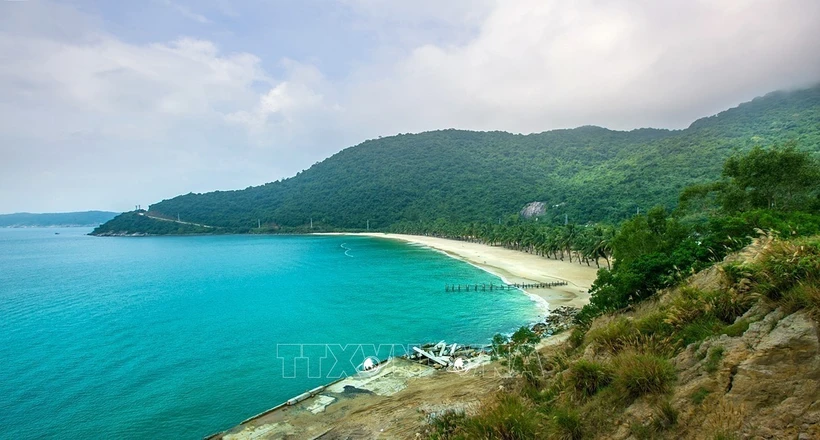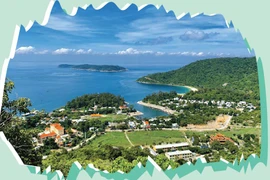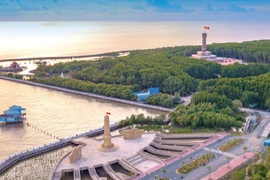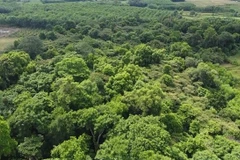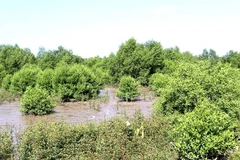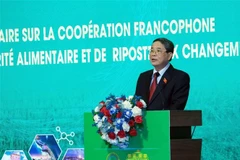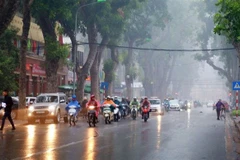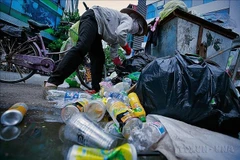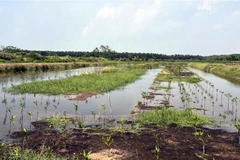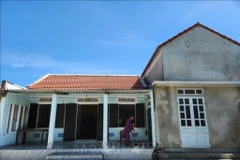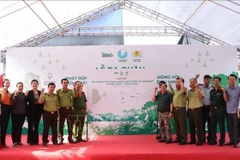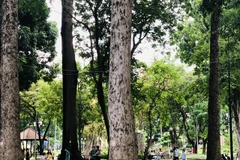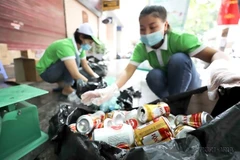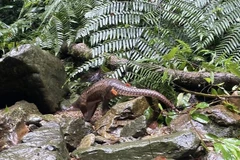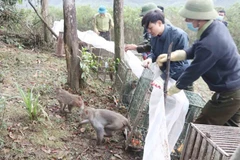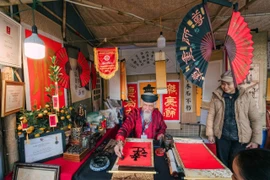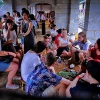Hanoi (VNA) – Patrick Haverman, Deputy Resident Representative of UNDP Vietnam, has emphasised the importance of placing people at the centre of environmental conservation efforts, saying that empowering communities and promoting sustainable livelihoods can create a future where humans and nature coexist in harmony.
After 24 years of joining the World Network of Biosphere Reserves, Vietnam now has 11 biosphere reserves recognised by the United Nations Educational, Scientific and Cultural Organisation (UNESCO). The UNESCO-recognised biosphere reserves play a significant role in conserving nature and biodiversity, protecting the environment, promoting cultural values, and contributing to the socio-economic development of local communities and the country.
To further promote the balance between socio-economic development and nature conservation, the Project "Mainstreaming Natural Resource Management and Biodiversity Conservation Objectives into Socio-economic Development Planning and Management of Biosphere Reserve in Vietnam" (BR Project) funded by the Global Environment Facility (GEF) through the United Nations Development Programme (UNDP) was implemented from 2019-2024 by the Department of Natural Conservation and Biodiversity under the Ministry of Natural Resources and Environment (MoNRE), in collaboration with the management boards of the Western Nghe An Biosphere Reserve, the Cu Lao Cham – Hoi An Biosphere Reserve, and the Dong Nai Biosphere Reserve.
Haverman said the BR project aims to harmonise biodiversity conservation with sustainable development, thus demonstrating that nature and people can thrive together.
It aims to address three barriers, including the legal framework for the operation of world biosphere reserves; the institutional structure and management capacity of world biosphere reserve; and the awareness of relevant agencies and sectors about the threats posed by biodiversity loss, thereby integrating biodiversity into socio-economic development planning.
Director of the Department of Natural Conservation and Biodiversity Nguyen Van Tai stated that the project is part of Vietnam's efforts to implement the Kunming-Montreal Global Biodiversity Framework (GBF) by 2030.
The project has supported the completion of institutional and policy frameworks, strengthened coordination among stakeholders in planning and building socio-economic development plans, and promoted sustainable management of natural resources, biodiversity conservation, and sustainable community-based livelihood models. Its disbursement rate has reached 95% as approved by the MoNRE.
These results have contributed to perfecting policy mechanisms for management activities in Vietnam's World Biosphere Reserves, thus developing necessary technical guidelines for integrating biodiversity conservation goals into the planning and management of biosphere reserves in Vietnam.
In addition, the project has supported the effective management of over 1.2 million ha of vital ecosystems, the restoration of 4,005 ha of degraded forest, and the protection of 62,940 ha of high conservation value forests (HCVFs). In terms of species conservation, the project has recorded an increase in populations of several key species, such as coral reefs in Cu Lao Cham – Hoi An; the gaur (Bos gaurus) and golden-cheeked gibbons in Dong Nai, and white-headed gibbons in Western Nghe An.
The project also benefited 3,125 households, equivalent to more than 11,500 community members, 40% of whom were women. Through sustainable livelihoods such as community-based ecotourism, native plant production, and environmentally friendly livestock farming, household incomes have increased by at least 20%.
Over 4,200 individuals, 44% of whom are women, have been trained in biodiversity-friendly practices. The project has also contributed to equipping communities with the necessary knowledge and skills to sustainably manage natural resources.
According to Haverman, building on the success of the BR project, the UNDP is committed to continuing close collaboration with the MoNRE and relevant stakeholders in Vietnam to implement others such as those on “Promoting Wildlife Conservation and Responsible Nature-Based Tourism for Sustainable Development in Vietnam," and “Sustainable Forest and Forest Land Management in Vietnam’s Ba River Basin Landscape”.
These projects will further strengthen Vietnam's role in fulfilling both international and domestic commitments to biodiversity conservation and natural resource management, he stressed./.
